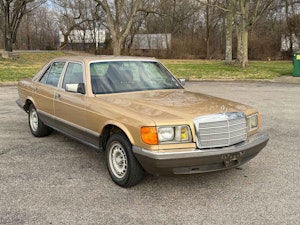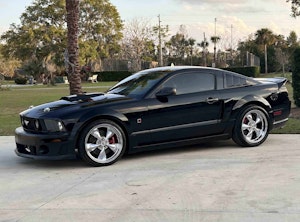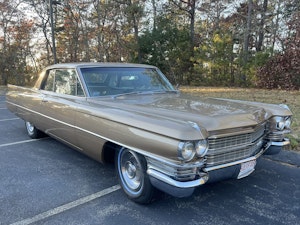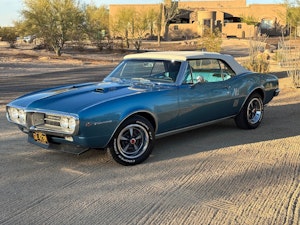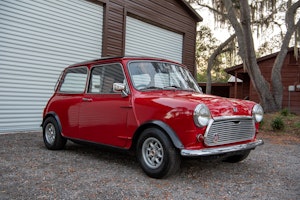Media | Articles
Jay Leno: “I have one good motorcycle crash left in me”
I have been riding motorcycles a lot lately. I figure I have one good crash left in me. Years ago, I fell off a bike one weekend and still limped into work on Monday and did The Tonight Show. I don’t think I could do that today. I’m not a young man anymore, and lately, I can half-paralyze myself for a couple of days just by turning my head too fast. But I can probably risk one more crash and still be around to annoy everyone with the story.
Collecting motorcycles makes a lot of sense to me because you can park a bunch of bikes in the space of one ’59 Cadillac. Why have just one thing that leaks oil when you can have a dozen in the same spot? And if you love the look of machinery like I do, motorcycles are wonderful, because they wear their mechanicals on the outside.
Open the hood of most new cars, and all you see is plastic, some design neophyte’s idea of warp drive. But a motorcycle’s engine has to be appealing. They are like the back of a Swiss watch, especially the early bikes, because you can see the exposed pushrods going up and down and the rocker arms and valve springs tapping away. It pleases me to look at them, and you don’t have to open a hood first to see the goods.


Marketplace
Buy and sell classics with confidence

I have a three-cylinder Triumph Rocket cruiser in the shop with a 2300-cc engine, the largest ever in a production motorcycle. Fast? Torquey? Oh, my gosh, it’s powerful. But the engine is not the prettiest ever made. It looks like somebody dropped a Ferguson tractor motor in sideways (the bike didn’t sell well). Unlike car companies, motorcycle makers have to make beautiful engines, and I love that.
There’s also way more to do as a rider than as a driver, especially on vintage bikes. You have manual chokes, manual spark advances, foot clutches, foot brakes, and so on, and it all has to be pushed and levered before you stop and again when you start going. The earliest Brough Superiors came out before the twist grip was invented, so to accelerate, you move one lever for gas and one for air, the so-called enricher, and listen to it until it sounds right. You also have a little window to watch the oil flow, and you have to work a hand pump to squirt oil into the engine. If you want to speed up, you go from 28 drops a minute to 32 drops a minute, or the thing will seize up. It’s like being the engineer on a two-wheel locomotive.
What you were expected to know back then is hilarious. I have a prewar Vincent Rapide Series A, what they call a “plumber’s nightmare” because of all the external oil lines. The manual says that after 1000 miles, you are to completely disassemble the engine, check everything, and reassemble. Yep, just take the engine apart, check “everything,” and whip it back together. At least with a bike you can get it through the front door and do it on the dining room table.
My 1922 Megola is a German motorcycle with a five-cylinder rotary engine in the front wheel and a top speed of about 52 mph. Once you start it, you can’t stop without stalling, so the manual says that when you come to a red light you should “orbit” until the light changes, and then pull away. That would be entertaining to try in West Hollywood.
Of course, there is increased danger, especially with older bikes. I was riding a 1924 Brough Superior a few weeks ago, and I hit the brake just as I hit a bump. The wheel bounced up, and the whole brake came apart and locked the rear wheel. I skidded down the street, but I managed to keep it upright. Luckily, this was after I had exited the freeway. As I was catching my breath, I realized that mechanical problems are so much scarier on two wheels than four.
Riding keeps you sharp, that’s for sure. But best of all, it makes me feel young. When I go back east and visit friends my age, most of them are just sitting around. When I ride up in the canyons, I’m surrounded by young people. All of them are faster than me, and that’s okay, because on an old bike, unlike today’s bikes, you can scare yourself pretty good at 45 mph. If I have only one crash left in me, that seems fast enough.
The article first appeared in Hagerty Drivers Club magazine. Click here to subscribe to our magazine and join the club.



